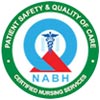
An Introduction To Nuclear Medicine
December 11, 2023
Nuclear imaging is a type of medical imaging that provides detailed pictures of what is happening inside the body at the atomic and molecular level. This information is crucial for understanding the underlying processes of disease and for guiding the most effective treatment plan for each individual patient.Nuclear Imaging insights in terms of diagnosis
Unique insights
Unlike other imaging technologies that focus on anatomy, nuclear imaging offers a functional perspective, revealing the physiological activity of tissues and organs. This allows physicians to detect disease in its earliest stages, often before it becomes visible on other scans or symptoms appear.Early detection
By pinpointing the exact location and extent of a tumor or other abnormality, nuclear imaging can help diagnose disease with greater accuracy compared to traditional imaging methods. This early detection can significantly improve patient outcomes and reduce the need for more invasive procedures.Personalized medicine
By providing information about the underlying biological processes of a particular disease, nuclear imaging enables physicians to tailor treatment to the individual patient's unique needs. This personalized approach can lead to more effective therapy and improved patient outcomes.How Nuclear Imaging is helpful for physicians?
Disease Assessment
Nuclear imaging allows physicians to determine the severity of a disease and whether it has spread to other parts of the body. This information is critical for making informed treatment decisions.Treatment selection
By revealing the unique biological characteristics of a tumor or other disease, nuclear imaging can help physicians select the most effective therapy for each patient. This can lead to better treatment outcomes and reduced side effects.Treatment monitoring
Nuclear imaging allows physicians to monitor the effectiveness of a treatment regimen and make adjustments as needed. This ensures that patients receive the most appropriate treatment for their specific situation.Early Intervention
By identifying disease progression or recurrence of disease early, nuclear imaging allows physicians to intervene quickly and effectively, potentially improving patient outcomes and reducing long-term complications.Ongoing Care Management
Nuclear imaging plays a vital role in managing chronic conditions and ensuring that patients receive the ongoing care they need.Conclusion
In conclusion, nuclear imaging is a powerful tool that provides unique insights into the human body at the atomic and molecular level. This information is invaluable for diagnosing disease in its earliest stages, selecting the most effective treatment, and monitoring patient progress. As a result, nuclear imaging plays a crucial role in personalized medicine and improving patient care.Recent Blogs
- Signs You Need to See a Doctor for Kidney Pain
- What Is A Nuclear Radiologist
- GUIDE TO NUCLEAR MEDICINE IMAGING
- Nuclear Medicine In Oncology
- Advancements In Nuclear Medicine Technology
- The Role Of Radiotracers In Nuclear Medicine
- An Introduction To Nuclear Medicine
- Cardiac Catheterization: When Is It Required?
- Types Of Pediatric Cardiology Test
- Tips For Preventing Heart Problems In Kids
- Advances In The Diagnosis Of Congenital Heart Disease In Children
- Signs Of Heart Problems In Children
- What Is A Pediatric Cardiologist?
- Understanding Congenital Heart Defects In Children
- Pediatric Cardiac Surgery: Types And Considerations
2023
- December (6)
- November (8)
- Cardiac Catheterization: When Is It Required?
- Types Of Pediatric Cardiology Test
- Tips For Preventing Heart Problems In Kids
- Advances In The Diagnosis Of Congenital Heart Disease In Children
- Signs Of Heart Problems In Children
- What Is A Pediatric Cardiologist?
- Understanding Congenital Heart Defects In Children
- Pediatric Cardiac Surgery: Types And Considerations
- September (7)
- Lifestyle Changes To Prevent Diabetes
- New Innovative Advances In Diabetes Treatment
- The Link Between Obesity And Diabetes
- Monitoring Blood Sugar At Home
- The Importance Of Regular Diabetes Check-ups
- Understanding Diabetes: Types, Causes, Symptoms & Treatment
- Lower Blood Sugar Naturally: Managing Blood Sugar Through Diet
- August (8)
- What’s The Difference Between A Neurologist And Neurosurgeon?
- Dementia: Causes, Symptoms, Diagnosis And Treatment
- Seizures: Causes, Symptoms, Diagnosis And Treatment
- Epilepsy: Causes, Symptoms, Diagnosis And Treatment
- Is Autism A Neurological Disorder? Causes, Symptoms & Diagnosis
- Pediatric Neurology: Neurological Disorders In Pediatrics
- What Are The Most Common Neurological Disorders?
- Types Of Neurosurgery: Overview, Procedure & Costs
- July (11)
- Types of Cardiac Stents
- Types of nuclear cardiology tests
- What Are the Different Types of Heart Surgery and Their Purposes?
- What is the difference between Cardiologist and Cardiothoracic Surgeon?
- What is the difference between Invasive, Non Invasive and Interventional Cardiology?
- What are the different Cardiology Subspecialties?
- What Are The Do’s And Don’ts For The Embryo Transfer Process?
- 5 Myths Over IVF
- Superfoods That Can Boost Your Chances of IVF Success
- What Is Male Infertility? Treatments For Male Infertility
- Causes of Male and Female Infertility
- April (4)
- March (1)
-

Share with us
Click Here -

Organ Transplantation
Click Here
Copyrights © 2024 PSG Hospitals. All Rights Reserved.








